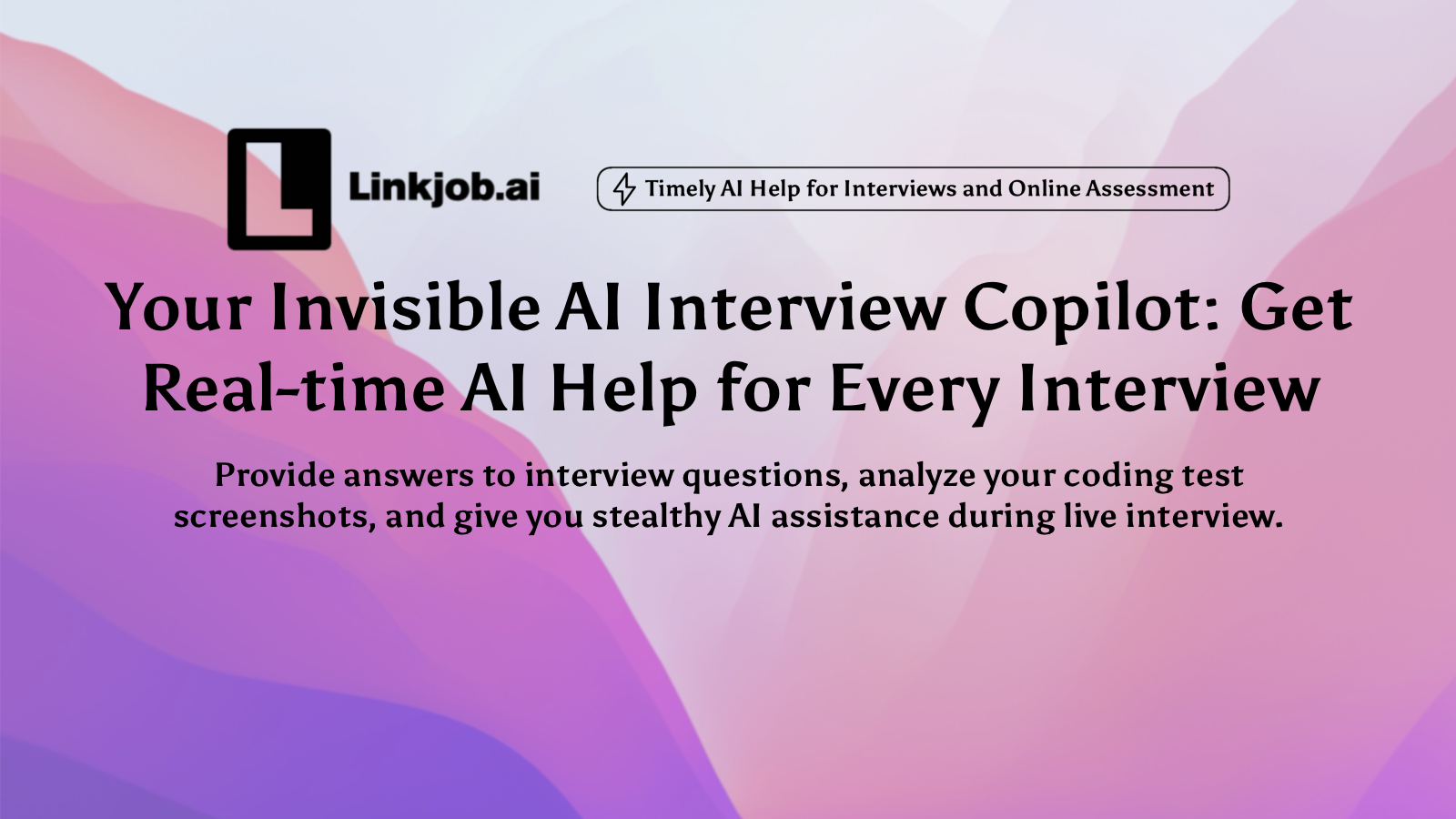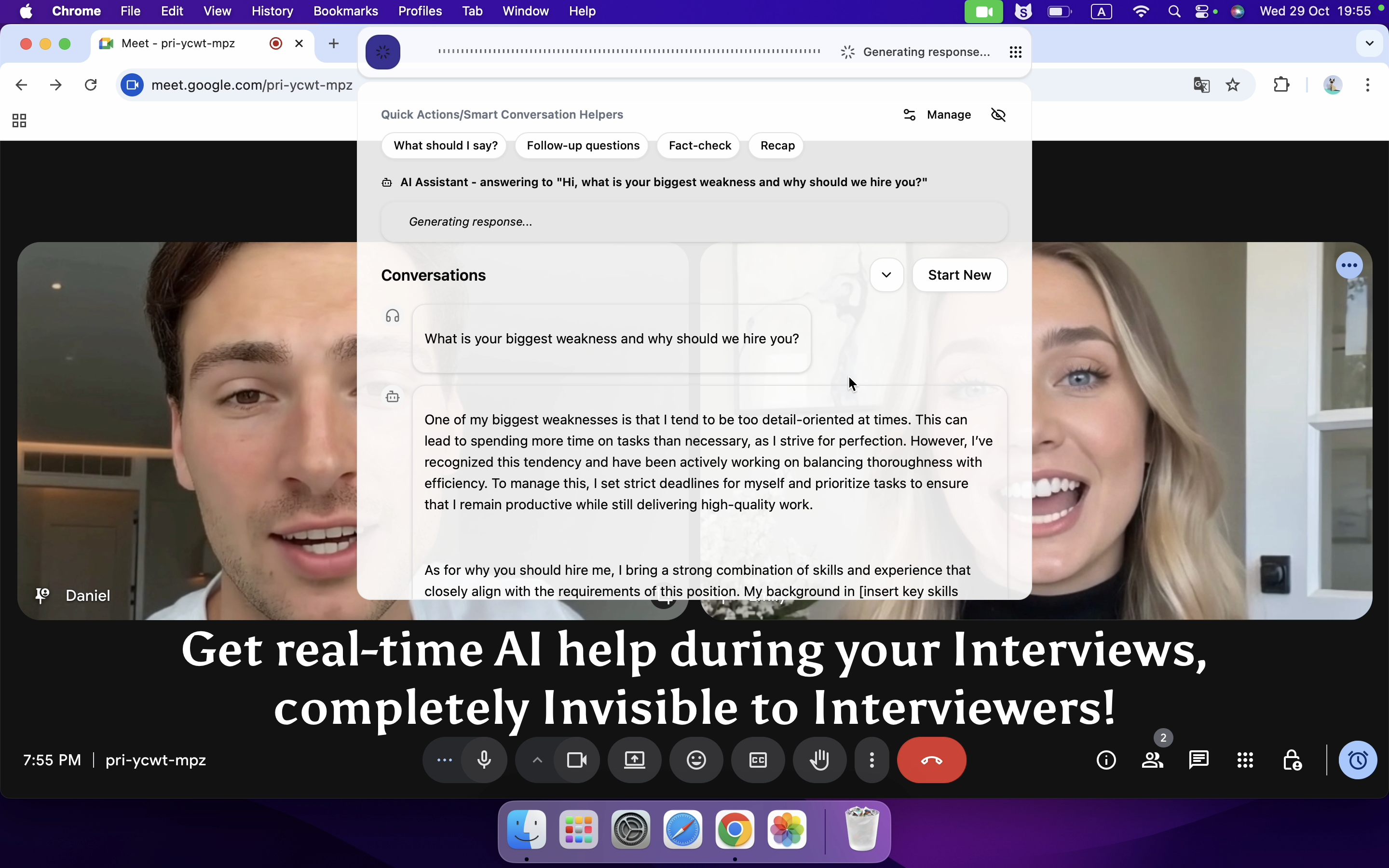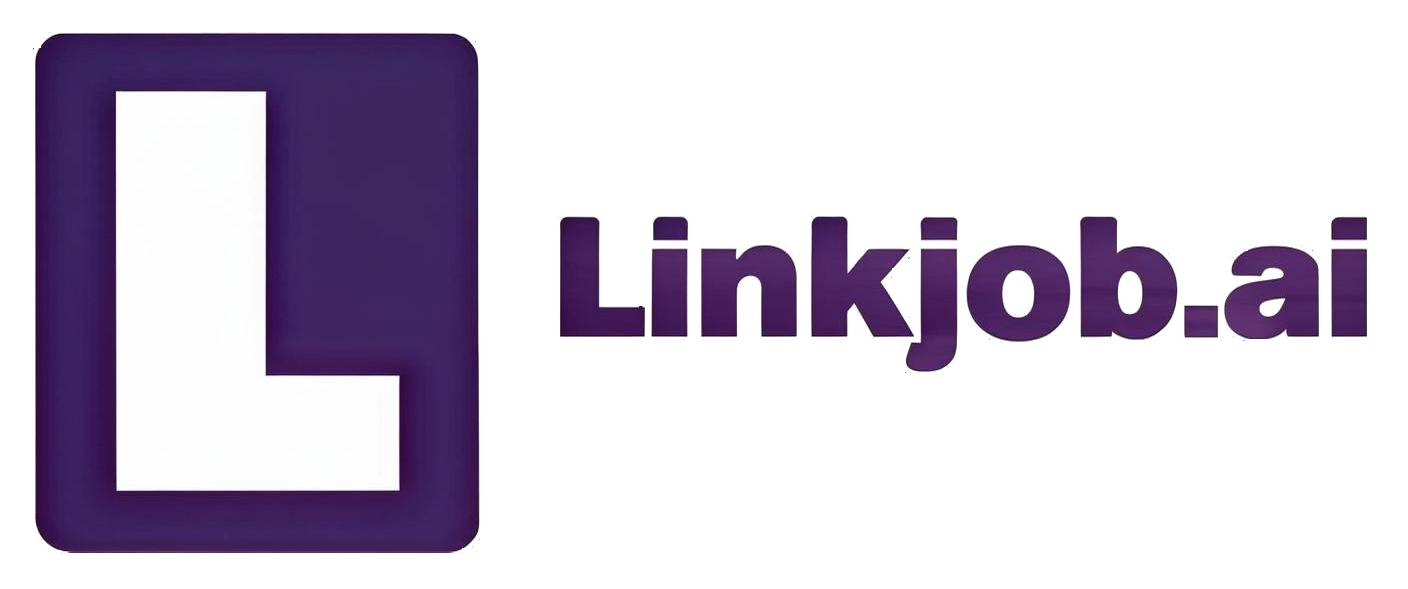My Experience Passing the Three McKinsey Solve Games in 2025

Before the interview, I believed that with effective strategies, I could easily master the McKinsey Solve Game. I don’t usually play games, but I prepared thoroughly for the McKinsey Solve Game and successfully completed it. In the following sections, I will explain my interview process and provide a detailed breakdown of the strategies I used. In short, my advice is to learn how to break complex problems into clear, actionable steps.
I am really grateful for the tool Linkjob.ai, and that's also why I'm sharing my entire interview experience here. Having an undetectable AI assistant during the interview is indeed very convenient.
McKinsey Solve Overview
Game Format
The PSG was divided into three parts: Ecosystem (35 minutes), Redrock (35 minutes), and The Sea Wolf (30 minutes). The core objective of the Ecosystem game was to build a sustainable biological habitat. In Redrock, I needed to complete a research report and six cases, with a recommended time allocation of 2:1 for these. Finally, The Sea Wolf required matching microorganisms to three contaminated sites.
In fact, I rarely hear about companies using a gamified approach for interviews. I found it quite interesting. This unique test used an ecological-themed game that challenged my ability to quickly identify the core of a problem and then use strategy to achieve a goal in a limited amount of time. Here is my experience:
I built self-sustaining ecosystems by selecting species and managing environmental factors.
Each game version felt unique. The system gave me different terrains, species, and constraints.
The games tested my ability to solve problems, make decisions, and adapt quickly to new information.
Assessment Purpose
The purpose of McKinsey Solve goes beyond testing knowledge. It measures how I approach complex, real-world problems.
Game Category | Key Tasks | Skills Tested |
|---|---|---|
Constrained Optimization | Build ecosystems, relocate animals after disasters | Data analysis, logical reasoning, decision-making |
Strategy and Adaption | Manage invasive species, allocate migration resources | Analytical thinking, resource management |
Cause vs Effect | Diagnose disease causes and treatments | Pattern recognition, cause-effect analysis |
Here’s what stood out to me:
The test evaluates my analytical and quantitative reasoning, data interpretation, and logical thinking.
The assessment rewards practical problem-solving skills, not just raw intelligence. I had to prioritize, estimate, and use shortcuts, just like in real consulting work.
Many candidates struggle with time management, not ability. I focused on practicing under timed conditions to improve my speed and accuracy.
By understanding the format and purpose of McKinsey Solve, I prepared myself to think strategically and act decisively during the assessment.

McKinsey Solve Game Strategies and Experience
McKinsey Ecosystem Game / McKinsey Food Chain Game
When I played the McKinsey Ecosystem Game (also known as the McKinsey Food Chain Game), my biggest wins came from carefully managing species interactions and energy flows.
This section required me to select eight species from a biological database, and they had to meet survival requirements like energy consumption, temperature, and food chain needs (for example, a tropical rainforest species couldn’t be placed in the Arctic). Then I needed to choose the optimal geographical location. After submission, the system simulated ecological stability. My approach was to prioritize creating closed-loop food chains like “plants -> herbivores -> carnivores,” and to avoid selecting too many species that used the same resources.
Here’s some more detailed advice:
Start with Plants: I began by introducing plants that thrived in the available environment. These formed the base of the food chain and supported herbivores.
Add Herbivores Next: Once there was enough plant biomass, I introduced herbivores that fed exclusively on those plants. I checked their reproduction rates and energy efficiency.
Then Add Carnivores Carefully: I brought in carnivores only when the herbivore population was stable. Adding too many too fast would collapse the chain.
Avoid Invasive Species Early: If there was an option to remove or avoid an invasive species, I did it early because they tended to destabilize the ecosystem.
Balance the Ratios: I made sure there was enough prey for every predator. If I noticed a bottleneck, I backtracked and adjusted the ecosystem manually.
Monitor Energy Flow: I closely monitored the energy bar and food web diagrams. If energy flow dropped below a threshold, I changed my species mix.
Prioritize Keystone Species: If a keystone species was available, one that stabilized multiple interactions, I introduced it first.
McKinsey Sea Wolf
The core objective of this game was to match microorganisms to three contaminated sites. Here’s how I approached it:
I created profiles for each site, noting details like the temperature (e.g., ≥60°C) and the type of pollutants. Then I selected microorganisms from the database that had to simultaneously meet three attributes (like heat resistance and decomposition efficiency) and four characteristics. After that, I chose three microorganisms and calculated their average values.
A helpful tip for this part was to create a comparison table listing the site requirements and the microorganism attributes. I then used a filter function to quickly find the right matches. For example, if a site required heat resistance of ≥60°C, I could directly filter for the corresponding microorganisms.
McKinsey Redrock Game
This section required completing a research report and several cases. It was divided into three phases: investigation, analysis, and reporting. Here’s what I did in each phase:
Investigation Phase: I filtered for key data from climate trend charts and species population tables. It was especially important to first look at the title of the chart and the axes
Analysis Phase: When calculating growth rates, I used quick calculation formulas, for example: (current value - base value) / base value * 100%.
Reporting Phase: I structured the report using a “problem-data-conclusion” format, which made it much clearer and more specific.
A useful trick was practicing with timed real questions. I also got into the habit of first examining the timeline and marking any abnormal values. For instance, if a species’ population suddenly plummeted in a certain year, that could be a key variable.
McKinsey Imbellus Test Evaluation Points
The McKinsey Imbellus Test, now known as the McKinsey Solve Game, is designed to assess core skills essential for a successful career in management consulting. The game measures how candidates approach and solve complex problems under pressure. Here's a breakdown of the key skills the test evaluates:
Problem-Solving
The test measured my ability to solve complex, unstructured problems. It did this by putting me in dynamic scenarios that required interpreting data, making decisions, and prioritizing actions to achieve a specific outcome.
I was challenged to:
Break down a complex problem into smaller, manageable parts.
Define a clear objective and establish measurable goals.
Make quick, strategic decisions under time pressure.
This section evaluated how I analyzed data, thought on my feet, and managed limited resources to achieve a quantifiable result.
Critical Thinking
McKinsey used this assessment to evaluate my critical thinking and logical reasoning. The scenarios tested my ability to apply structured thinking, identify the root cause of a problem, and formulate a clear, actionable solution. This skill was also vital for handling tough McKinsey interview questions.
The test assessed my ability to:
Use a structured approach (like the Pyramid Principle or MECE) to organize my thoughts.
Identify and challenge underlying assumptions.
Formulate a logical, data-driven conclusion.
This skill was crucial for handling complex client issues where I had to go beyond surface-level analysis to find the core problem.
Systems Thinking
The test evaluated my capacity for systems thinking, which is the ability to see the bigger picture and understand how different elements within a system interact. The ecological scenarios, for example, tested my understanding of cause-and-effect relationships and ripple effects. This skill was also a key part of the McKinsey case interview.
The game challenged me to:
Recognize patterns and connections within a complex system.
Understand how one decision could impact multiple elements.
Analyze the broader implications of my actions.
This skill was vital in consulting, where a single recommendation could have widespread effects on a business or organization.
How to Practice for the McKinsey Solve Game
Effective Mock Interviews
I always start my preparation with rigorous mock interviews. Practicing in a realistic environment helps me build confidence and improve my skills.
When I review my answers using the feedback from the tools, I can observe my own thought process and learn how to communicate more clearly. I've found that reviewing my performance on video helps me catch mistakes I might normally miss. This approach is very similar to the feedback-driven culture at top consulting firms.
Real-Time Interview Tools
While interview strategies and techniques were essential, my on-the-spot performance mattered most in the McKinsey Solve Game. To gain an edge, I used Linkjob’s real-time AI interview assistant. This tool could see my interview questions, listen to the conversation, instantly detect problems, and offer smart answer suggestions. I could see key points and structured responses in real time, which helped me stay focused and avoid mistakes.

Optimized for finance interviews, Linkjob’s real-time support was especially crucial for the unique demands of the McKinsey Solve. Instant feedback and smart suggestions helped me address unexpected questions and improve my answers during the interview, instead of only thinking of better solutions and responses afterward.
FAQ
How do you manage time during the McKinsey Solve Game?
I set a timer before practice sessions and focus on quick decision-making and avoid overthinking. I use practice games to build speed.
What is the best way to prepare for unexpected questions?
I practice with a variety of scenarios. I use mock interviews to simulate surprises. I stay calm and think logically. I rely on frameworks to structure my answers.
See Also
My 2025 McKinsey Case Interview Insider Tips That No One Shares
How to Ace McKinsey HackerRank Test in 2025 With Easy Tricks
My McKinsey Sea Wolf Journey: Personal Story and Winning Strategies
All Types of Questions I Encountered in My McKinsey Interview

